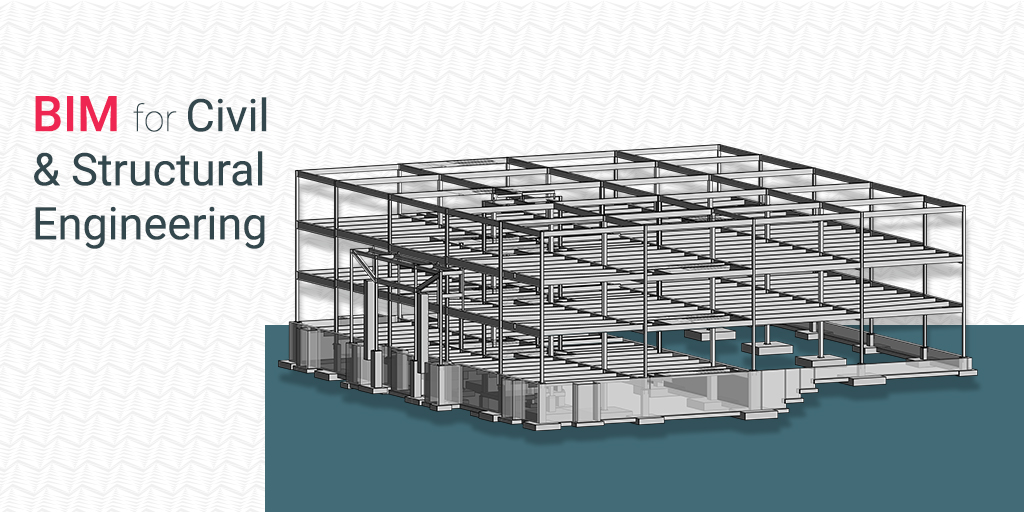Technology has made a massive impact on the way things happen in the engineering segment. Notably, the use of modern methodologies like Building Information Modeling (BIM) has transformed the way civil and structural engineering projects are completed.
Civil and structural engineering are two of the most important aspects of the modern AEC industry. These both skills affect the entire lifecycle of a project, right from inception to delivery, operations, and handover. Civil and structural engineers are expected to stay on top of all the information associated with a project. In this context, BIM enables them to adopt a multi-disciplinary approach for accelerated decision-making.
BIM has been transforming the civil/structural ecosystem as we know it and assists engineers with turnkey planning, design, construction, ownership and maintenance of a project. In this blog, let’s look at how BIM impacts structural and civil engineering operations.
Impact of BIM on Civil & Structural Engineering
BIM is called as a catalyst for structural and civil engineering. This is because it addresses many issues related to productivity, quality, transparency, and collaboration.
For the success of BIM civil engineering and structural engineering projects, many stakeholders have to work together. BIM allows such projects to enjoy high-levels of transparency and allows engineers to collaborate effectively.
BIM is augmenting the engineering process by allowing stakeholders to be more productive and efficient. All in all, BIM impacts the civil and structural engineering part positively by allowing engineers to:
- Perform integrated analysis and production of drawings for improved design efficiency
- Improve coordination & communication between all the stakeholders owing to a central 3D model & common development environment
- Engage non-technical stakeholders holistically owing to better visualization capabilities
- Improve the prefabrication design process owing to a detailed model
- Execute simulation-based project planning and optimization methodologies
- Improve budgeting efforts by linking all the on-ground activities with digital components.
Types of BIM Structural Engineering & Civil Engineering Projects
BIM is beneficial for varied structural and civil projects in modern times. Be it a building design project, infrastructural construction or facility management project, BIM can add efficiencies to various planning, operational and execution aspects.
Different types of projects have different priorities when it comes to BIM implementation. This majorly is because of the goals of different stakeholders. BIM has various applications based on the type of project.
1.
BIM for Building Design & Construction
Developing projects from scratch, as in the case of building design and construction involves several stakeholders. Civil & structural engineers have to coordinate between hundreds of structures and services, all blended in a singular architectural design for completing a building’s construction.
BIM facilitates seamless coordination and communication between design, engineering and construction teams. By creating a single model, BIM allows better management of on-site activities and eliminate chances of miscommunication or ill-coordination.
As everyone is working on a single shared model, the quality of the construction improves and chances related to reworks, delays, and risks are reduced. BIM in building design and construction projects optimizes the delivery schedule and paves the way for smoother handover and operations.
2.
BIM for Infrastructure & Facility Management
Infrastructure and facility management contracts are much more complex than beginning a new design and construction project. Most of these tasks involve routine maintenance, upgrades and fine-tuning the utilities.
Operational and asset management aspects have been historically segregated in most of the asset information management systems. This creates a divide between the construction and facility management endeavors.
With BIM, facility managers are better equipped with the information needed throughout the entire asset lifecycle. BIM allows improved information management for supporting asset and facility management tasks. Everything needed is attached to a single model which makes it easier for facility managers to access required information whenever required.
Earlier, what used to take days to locate information to perform minor maintenance tasks owing to paper trail associated with large building management operations. With BIM, everything becomes more efficient owing to the virtualization of assets and the impact of facility management on all other operational aspects.
How BIM Changes Traditional Job Roles in the Structural & Civil Engineering Industry?
When it comes to the discussion of transitioning job roles, BIM has a lot to contribute to the structural and civil engineering domain. Thanks to BIM civil & structural engineering, processes such as design, clash detection, visualization, etc. have been simplified. BIM has a lot to add to the existing structural and civil engineering value chain. Here are how various stakeholders can improve their productivity by adopting BIM.
1.
Designers
With the help of BIM, designers can create 3D designs consisting of all the required material properties. On top of it, the different levels of BIM allow embedding of valuable information against different components and objects. This helps designers keep a standard record of the design changes which they can share with any of the stakeholders, without having to gather all the data at a single place.
2.
CAD Technicians
BIM promotes automated drawing production owing to several available tools and libraries. The self-updating design and drawing process helps CAD technicians to become better at reflecting changes in schedules and drawings without much fuss. The 3D BIM model can be linked to plans, elevations, sections, schedules and drawings, which helps in keeping a streamlined and standard source of information for everyone.
3.
Design Managers
For design managers, BIM offers multiple benefits. At one level, the BIM process aids the clash detection process, which helps avoid problems during construction. At another level, BIM’s interactive 3D models allow easier visualization resources to help managers consult clients in a better way than sophisticated engineering drawings.
Wrapping Up
BIM has revolutionized the entire AEC industry since its large-scale adoption in multiple countries around the globe. BIM opens new avenues for higher efficiency and productivity for the civil and structural engineering segments. If you are interested in harnessing the power of BIM for civil and structural projects, get in touch with our experts today.





